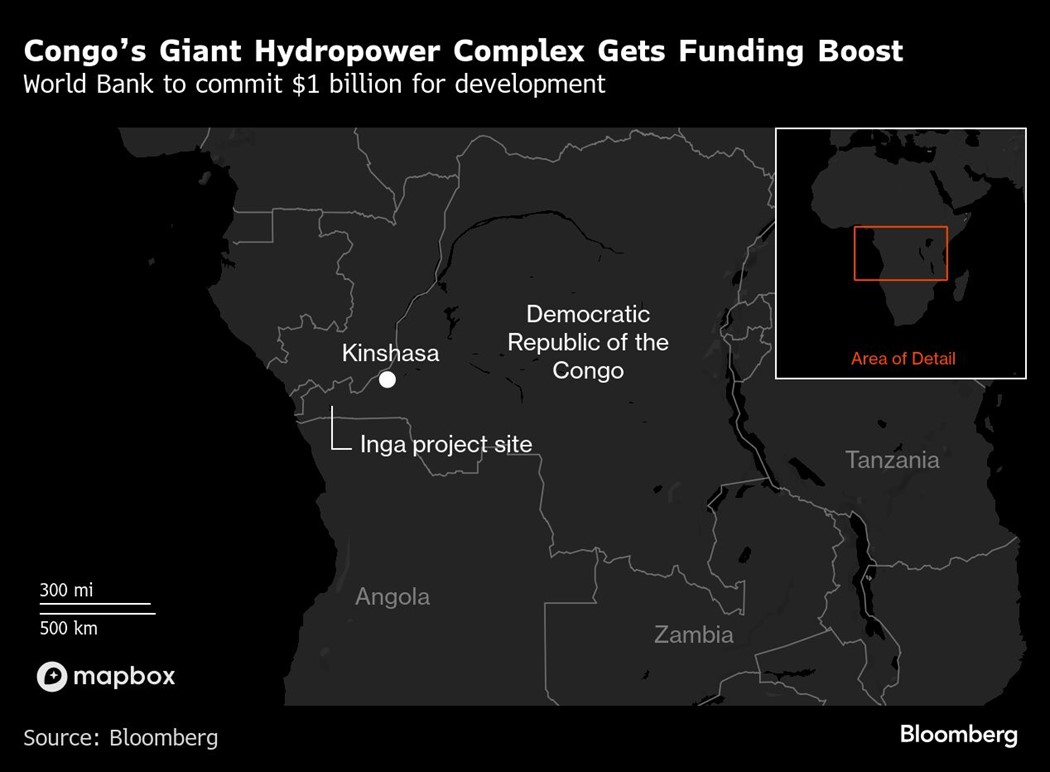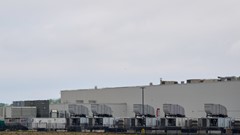World Bank Commits $1 Billion to Revive Key Congo Hydro Plan
Jun 04, 2025 by Bloomberg(Bloomberg) -- The World Bank said it is committing $1 billion to help the Democratic Republic of Congo prepare for the development of the next stage of what could be the world’s biggest hydropower project.
The bank will initially commit $250 million toward Inga III, a portion of the Grand Inga hydropower complex. The project forms part of the so-called Mission 300 program, which is backed by the lender, aims to bring electricity to 300 million Africans by 2030 and could attract about $85 billion in private investment, according to Ajay Banga, the institution’s president.
Once complete, the project could generate 11,000 megawatts of power — more than triple Congo’s current capacity — and cost $10 billion. The first tranche of money will be used to fund studies, boost economic development, reform the state electricity company and attract private developers for the facility on the Congo River.
The electricity may be used to support minerals processing, electrify the capital, Kinshasa, and supply other energy-poor countries in the region.
Inga I, an initial 351-megawatt plant, was commissioned in 1972 and the 1,424 megawatt Inga II facility a decade later. Conflict, a history of corruption scandals and prohibitive costs have stalled further development since then.

The World Bank’s funding approach “maximizes the chances of Inga III actually happening,” Yadviga Semikolenova, the lender’s practice manager for energy in eastern and southern Africa, said in an interview.
A $36 billion plan to develop Congo’s power industry, which supplies only about a fifth of the country’s more than 100 million people with electricity, was presented at a Mission 300 conference in Dar es Salaam in January and hinges heavily on Inga. Congo’s government has committed to tripling access to power by 2030.
Still, Inga III has had a series of false starts. Last year, the government said it had signed a preliminary deal with Nigeria’s Natural Oilfield Services Ltd. to build a 7,000-megawatt plant at the site and develop an aluminum refinery. That supplanted an agreement with Fortescue Ltd., a company owned by Australian mining billionaire Andrew Forrest, to develop a 40-gigawatt complex that would produce green hydrogen.
Fortescue had replaced a group of Spanish and Chinese companies that failed to develop a $14 billion, 11-gigawatt version of the project. South Africa had agreed to buy power from that version of the facility. It’s unclear what happened to the agreement with Natural Oilfield.
The World Bank itself pulled out of an earlier technical-assistance program in 2016.

“It’s important for the country and the government to build credibility with development partners, the private sector, but also most importantly with the community and people of the DRC for a project of that scale to be developed,” Semikolenova said.
The Inga site on the Congo River, the world’s third-biggest by volume, has the potential to ultimately generate about 40,000 megawatts of electricity. Currently the world’s largest hydropower plant is the 22,500-megawatt Three Gorges project on the Yangtze River in China.
Most electricity currently produced at Inga is transmitted 1,600 kilometers (1,000 miles) to power Congo’s copper and cobalt mines, which are run by companies including CMOC Ltd., China Railway Group Ltd. and Glencore Plc.
Expanded generation could also be used to promote development along the Lobito Corridor, a rail line running from the copper and cobalt mines to the Angolan coast, and to supply electricity into Africa’s southern, eastern and central power pools, Semikolenova said.
Utility Reform
Key to any development of Inga will be the reform of Congo’s state-owned electric company, known as SNEL.
The company will need to become more reliable, efficient and credit-worthy to develop the sort of public-private partnership that could attract enough capital to fund the project, Wendy Hughes, the World Bank’s regional director for infrastructure in eastern and southern Africa, told reporters during a video conference.
“The exact structure” of the project will be determined by the initial studies, she said. Smaller versions of Inga III are possible, according to the World Bank.
Still, the plan is already drawing opposition.
The development of Inga III and its associated reservoir could displace more than 30,000 people and exacerbate Congo’s debt, International Rivers, a California-based nonprofit that opposes the construction of dams worldwide, said in a statement.
Congo may use a meeting convened by the bank and other Mission 300 partners in London this week to showcase Inga III to private European investors, Semikolenova said.
Zimbabwe Burundi, Ghana, Togo and Mozambique are scheduled to present their electricity development plans at the event, adding to the 11 who presented in Dar es Salaam. Namibia and Lesotho will present their plans at an energy conference in Cape Town later this month.
(Updates with opposition to plan in third-last paragraph)
©2025 Bloomberg L.P.
By


















